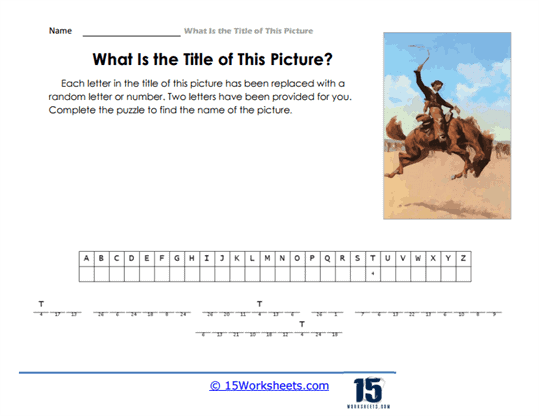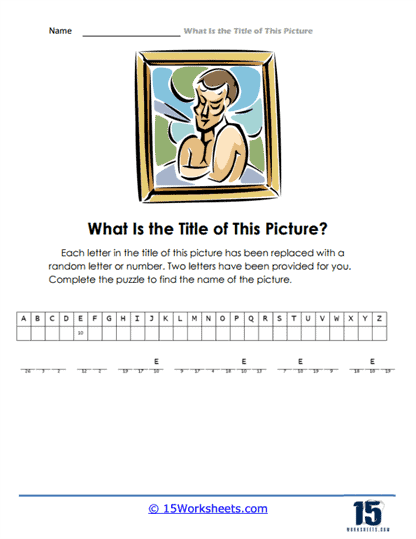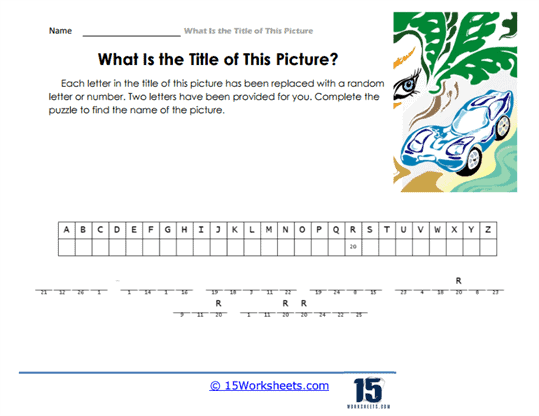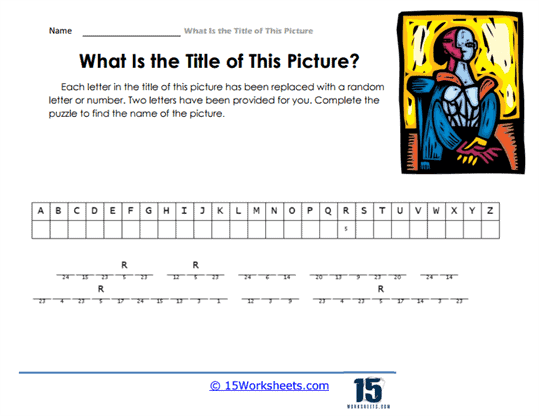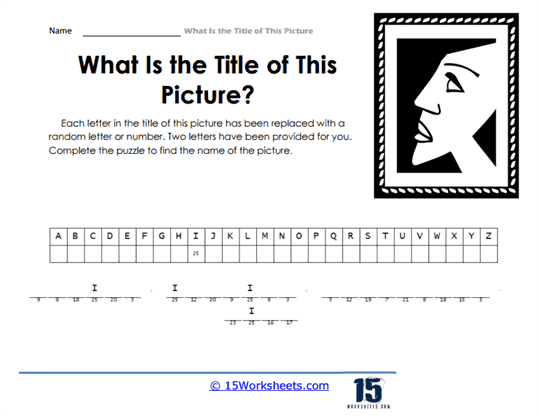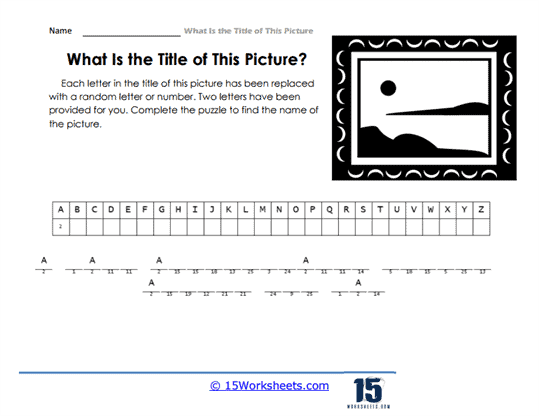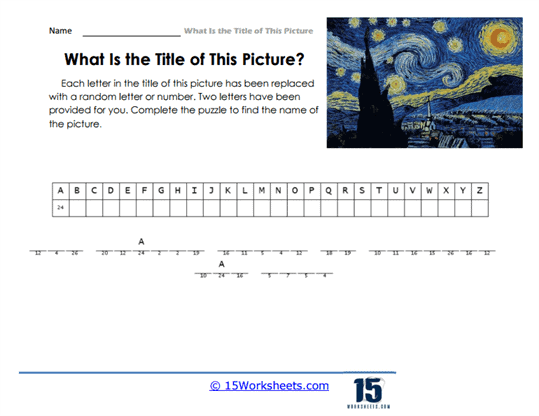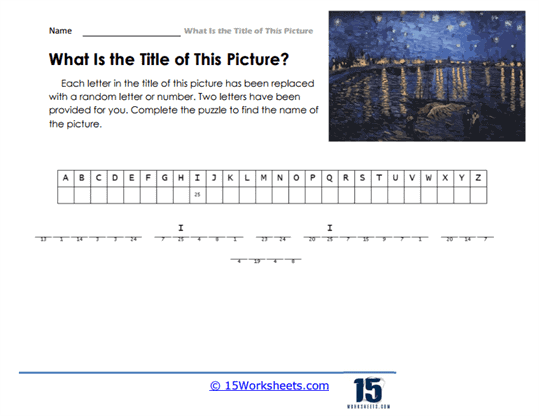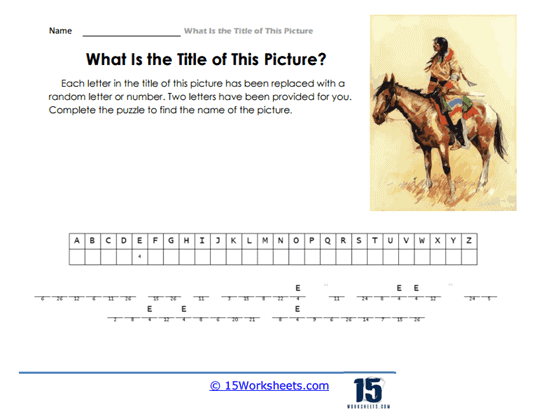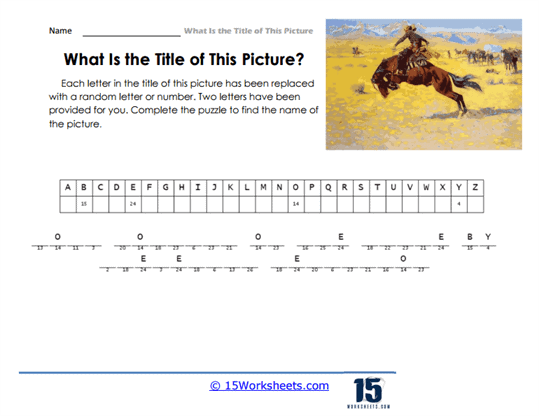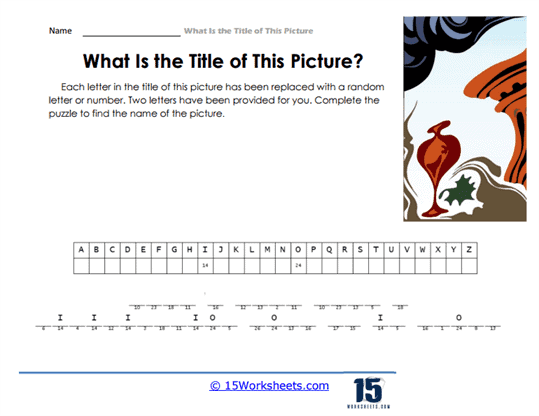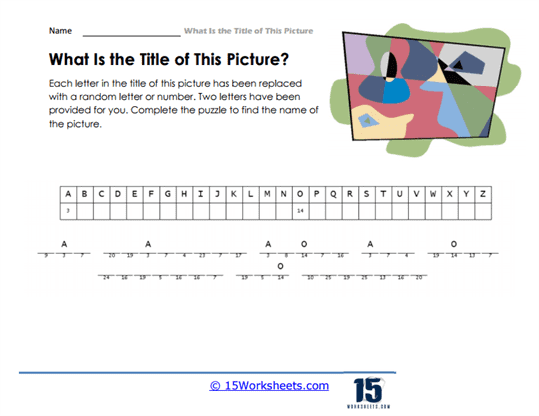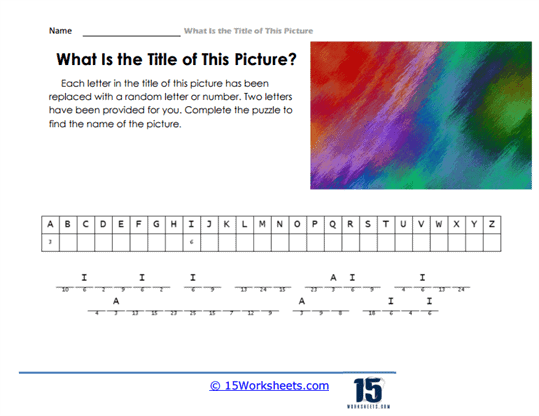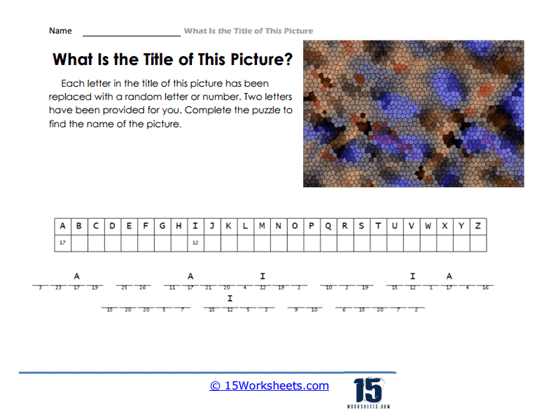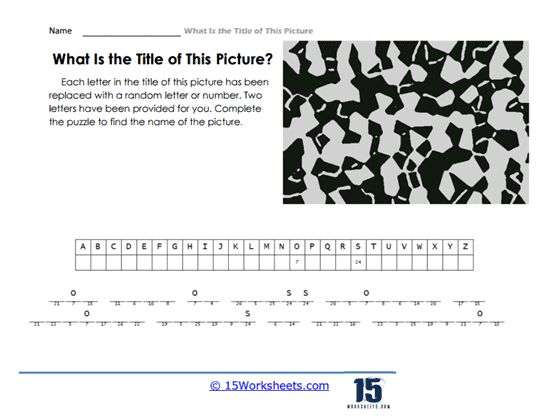Picture Titles Worksheets
All About These 15 Worksheets
This series of 15 worksheets on picture titles offers an exciting and engaging learning experience for students to enhance their vocabulary skills while deciphering cryptogram puzzles. Each worksheet features a captivating picture accompanied by a cryptogram puzzle that students must solve to reveal the corresponding picture title.
Overall, these worksheets combine the excitement of cryptogram puzzles with vocabulary expansion and visual comprehension. They foster critical thinking, problem-solving, and language decoding skills. Students enhance their vocabulary, develop their ability to decode and comprehend text, and engage in creative activities that utilize the newly acquired vocabulary. This series of worksheets provides an enjoyable and challenging learning experience that reinforces both language skills and puzzle-solving abilities.
How to Title Your Images
Photography takes a lot of work. There are many things a photographer does, both on the technical and artistic sides. The artistry takes up a lot of time, imagination, and thought since a photographer composes every image. They also have to maintain their gear and keep up with rapidly evolving technology to produce the best results. Amidst this tiresome process, it’s easy to forget some vital details that play a huge role.
Your image’s titles are one of those details. A photographer rarely stops to think about one, but almost every image has a title.
Great Titles are Descriptive
Easy to understand, but there’s a caveat to this. You wouldn’t want your title to be too descriptive. It has to be something that sparks interest and draws a casual onlooker toward the photo. Titling a photo of a couple holding hands “Love” is easy. However, it doesn’t tell your audience something they didn’t know about the photo.
On the other hand, titling this photo “Beginnings” could tell your audience that not only is this a couple in love, but it is a new couple.
Keep them Simple
Another trick you can try to nail your image titles is keeping them easy to understand. They don’t have to be minimalist (however, you can keep them that way if you want to). Just remember that an image’s title doesn’t have to be a complete sentence. In general, the longer your title, the less likely it will be absorbed and read by your audience.
It just needs to be a few descriptive words that pique interest. Your image is supposed to do most of the talking. Rather than titling an image, “high leap over the wall in the forest,” you may title it something simpler like “Leaping a Wall.” You can also consider naming it something that gives off a sense of the season or the time of the day.
Make Use of Prose Tricks
This is another trick that can make your titles somewhat catchy. You can experiment with this technique in several ways. For instance, unity can help you, as can alliteration. Titles like the “Stormy Sea” or a “Frozen Forest” have a pleasing rhythm that will ensure your titles are easy to remember. That is also why titles play a vital role.
A title that sounds good is also easy to remember. When a person remembers your title, they’re going to remember the image you’ve captured. Try rearranging different words so they form interesting syllables or a pattern. For instance, you may also use a comma or a punctuation mark to give a title a pause.
Your titles are all about communicating the meaning behind the art you create. These titles will become a part of your images and effectively contribute to the message you’re trying to convey. That is also why they’re worth the time and effort. Put some thought into the titles you create; you’re going to notice a difference in the response you get.

